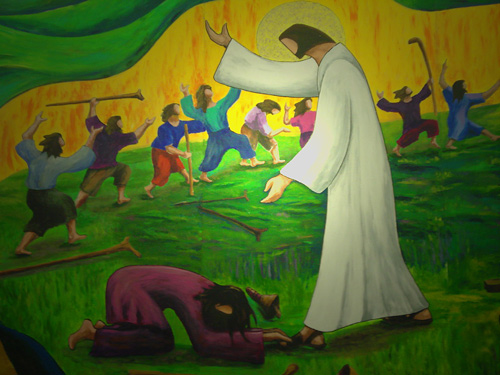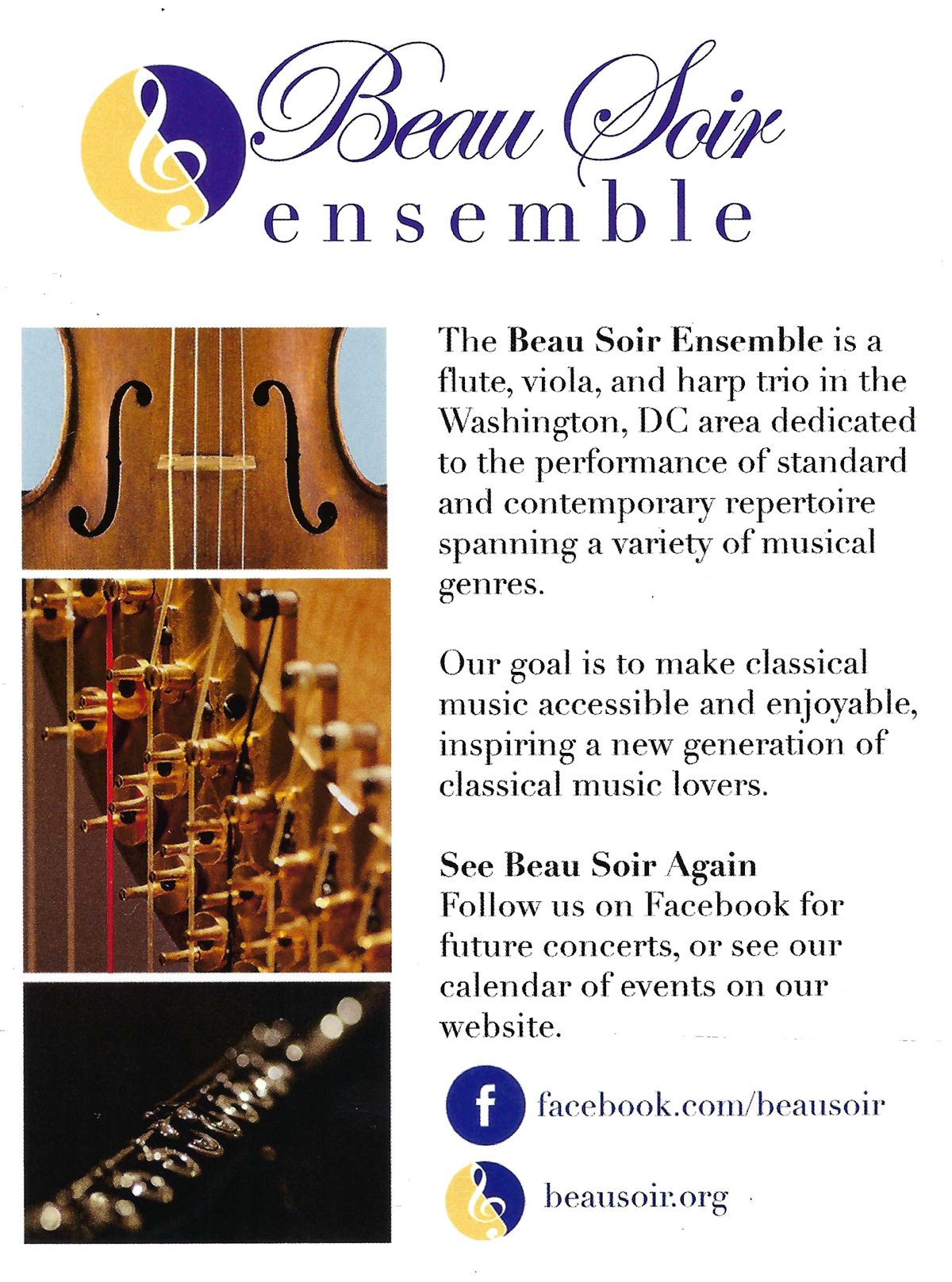
Today’s scriptures remind us that faith and gratitude go hand in hand when we respond to God’s healing power at work in our lives.
In today’s gospel story, Jesus is in the region between Galilee and Samaria, heading for Jerusalem. Both Jews and Samaritans must have lived in the village that Jesus entered. But even if they did live together in the same village, they probably stuck to their own groups. After all, the Jews looked down on the Samaritans, and I would imagine that the Samaritans did not care to be around the Jews either.
But all of them, both the Jews and Samaritans, avoided the lepers and stayed away from them. Jewish law required that these people with a fatal skin disease that slowly stole away their bodies and finally their lives had to stay away from those who were well. The lepers were avoided by everyone.
A Samaritan with leprosy must have felt doubly cursed and outcast.
Maybe the Samaritan leper in today’s gospel lingered in the back of the group as the others called out to Jesus asking for mercy. The Samaritan must have wondered if this Jewish healer would extend mercy even to him, a despised Samaritan.
Maybe he was surprised when Jesus did not cull him out because he was a Samaritan, unworthy of healing.
But Jesus sees all the lepers and tells them all to “Go and show yourselves to the priests.” It was on the way to the priests that all ten lepers were made clean. I suppose the other nine went to the priests as Jesus had told them to do, because they wanted the priests to examine them and to formally declare them clean. With the priests’ blessing they could return to whatever was left of their former lives.
The Samaritan did not ever make it to the priests. When he saw that God had healed him, he needed no other validation. He was free at last, and so he turned back to thank Jesus, shouting out his praise and thanksgiving to God.
Out of the group of the ten lepers, only the Samaritan recognized that God and Jesus were part of the same healing fabric of love and mercy that had just enfolded him and made him clean, and his gratitude knew no bounds.
As the leper threw himself at Jesus’ feet and thanked him, Jesus took note that the other nine had not returned to say thank you. Only the Samaritan had made the connection that Jesus, the healer, was doing God’s work and had returned to give thanks to God for the healing he had received through Jesus.
In the parallel Old Testament reading, Naaman, a commander in the Syrian army, cursed with leprosy, is washed clean when he follows the prophet Elisha’s instructions and bathes in the Jordan River.
After his healing, Naaman returns to the prophet to say thank you before he returns home. Like the leper that Jesus healed, Naaman realizes that the healing power that came to him through Elisha is the healing power of God. Out of gratitude, Naaman becomes a follower of the God of Israel, the One who has brought him healing.
But what about offering faithful gratitude to God when life brings hardships our way—when pain slows us down, or when we don’t get the physical healing we had hoped to receive, or when our lives don’t play out in the ways that we had expected.
There’s one more person in today’s Old Testament lesson that I just have to mention because she is one who must be full of faithful gratitude to God even though her life has taken an unexpected turn and she has ended up in slavery.
Although she only has a bit part in the story, without her, Naaman may never have been healed of his leprosy and come to know God.
This is the young girl serving Naaman’s wife, who says to her mistress, “If only my lord were with the prophet who is in Samaria! He would cure him of his leprosy.”
This young girl, unnamed in the story, has certainly endured hardship. Imagine being snatched from your family, taken from your familiar surroundings into a foreign land, and then being made to work for the family of the commander of the army that has carried you into captivity.
And yet, despite these hardships that have been imposed on her, this young girl willingly shares the information that will lead to the healing the person who is ultimately responsible for her hardships!
Scripture doesn’t tell us anything else about the girl, but I believe that her faith in God and her gratitude to God that she was even alive allowed her to give thanks in her current circumstances and to be generous toward a person that she could have chosen to hate.
The girl sees beyond her own difficulties and sees and cares that Naaman is a person in need of healing. She can see that Naaman’s healing will not only benefit him, but also his whole household as well.
Wouldn’t you love to know more about this young girl and her story? I would! But scripture, as it does with so many of the people that inhabit its pages, leaves the details of this girl’s story to our imaginations.
But her faithful gratitude, which has led to her incredible generosity toward her captor is obvious.
That’s the kind of faithful gratitude I want, the gratitude toward God even in the hard times, that encourages me to share God’s merciful love with those around me.
We have all endured rough times and find that gratitude can be in short supply when we are suffering.
And yet—when we have faith that God is with us, then gratitude for God’s goodness will well up in us like a healing balm, even in the roughest times of our lives.
Hank Dunn, a hospice chaplain, writes that “if there is one attitude that can sustain us through the most difficult of circumstances, it is ‘the attitude of gratitude.’ This is the ability to give thanks for the gifts in one’s life, not necessarily because of the hardships, but in spite of them. In other words, we are not grateful that we have a life-threatening illness (or whatever the hardship is), but we are able to give thanks while we have a life threatening illness” (or whatever the hardship is that we are enduring).
Cultivating gratitude reminds us that a power greater than ourselves is at work in this world, a power working on our behalf. We can depend on this power to sustain and heal us even in the hard times.
Studies have shown that specific activities can help us to cultivate gratitude. The writers of an online article about gratitude published by Harvard Health Publishing, Harvard Medical School, list some common sense things that we can do to cultivate gratitude on a regular basis—to thank others who have blessed us by expressing our gratitude for what they have done; keeping a list of blessings we’ve received each day in a gratitude journal; counting our blessings; praying and meditating.
And most important—to remember to give praise to God for our blessings, both great and small, to acknowledge God as the source of our blessings.
So today, as a way of practicing gratitude right now, let’s pray together the General Thanksgiving found on page 836 in The Book of Common Prayer. The Rev. Dr. Charles P. Price, a long time professor at Virginia Theological Seminary, wrote this beautiful prayer of gratitude for our current edition of The Book of Common Prayer.
Let us pray.
Accept, O Lord, our thanks and praise for all that you have
done for us. We thank you for the splendor of the whole
creation, for the beauty of this world, for the wonder of life,
and for the mystery of love.
We thank you for the blessing of family and friends, and for
the loving care which surrounds us on every side.
We thank you for setting us at tasks which demand our best
efforts, and for leading us to accomplishments which satisfy
and delight us.
We thank you also for those disappointments and failures
that lead us to acknowledge our dependence on you alone.
Above all, we thank you for your Son Jesus Christ; for the
truth of his Word and the example of his life; for his steadfast
obedience, by which he overcame temptation; for his dying,
through which he overcame death; and for his rising to life
again, in which we are raised to the life of your kingdom.
Grant us the gift of your Spirit, that we may know Christ and
make him known; and through him, at all times and in all
places, may give thanks to you in all things. Amen.
Resources: The Book of Common Prayer
Hatchett, Marion J. Commentary on the American Prayer Book. New York, New York: The Seabury Press, 1981.
Dunn, Hank. Light in the Shadows: Meditations while living with a life threatening illness. Copyright 2005 by Hank Dunn.
https://www.health.harvard.edu/healthbeat/giving-thanks-can-make-you-happier





 Yours are the hands, with which he blesses all the world.
Yours are the hands, with which he blesses all the world.

